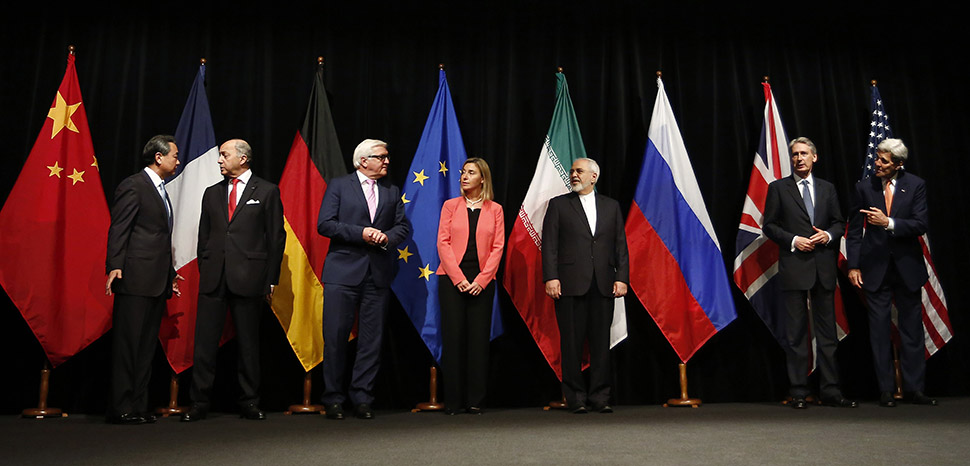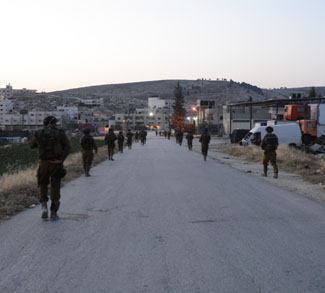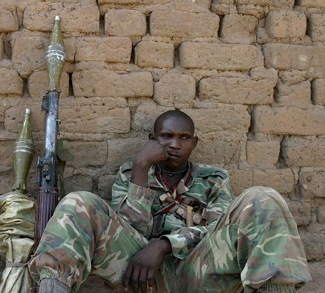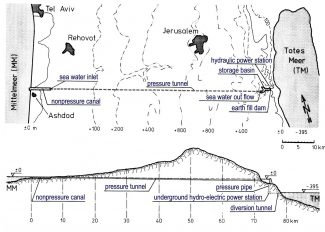As Iran advances in its nuclear capabilities, the international community faces an uncomfortable reality: the potential for the development of nuclear weapons. While diplomatic negotiations and economic sanctions by the international community have been utilized to address this issue, these measures did not prevent Iran from reaching its currently advanced stage in pursuing its nuclear program. Uncertain results mark the way for the US administration’s efforts to revive the Iran nuclear deal, and the prospect of reaching an internationally acceptable agreement with Iran seems hardly achievable. Although Iran’s apparent limited steps in slowing its build-up of weapon-grade uranium may temporarily ease tensions between Iran and the international community, including the Arab states, this does not imply reaching a wider nuclear deal any time soon. This is especially true given that uranium stockpiles continue to increase in addition to enriched uranium, which, if refined further, can easily be turned into nuclear bombs. In this respect, Iran has failed to address the International Atomic Energy Agency’s (IAEA) concerns regarding traces of uranium that were found at two undeclared sites, as well as restore monitoring cameras, despite pressure from the West.
Earlier in September, Iran denied access to almost a third of the IAEA’s most experienced inspectors to oversee the country’s nuclear sites. The IAEA’s chief slammed Iran’s move as unprecedented and indicated that it would complicate inspection of Iran’s nuclear program as well as the agency’s ability to provide credible assurances that Iran’s nuclear material and activities are for peaceful purposes. On one hand, the United Kingdom (UK), France, and Germany refused to lift sanctions on Iran under the nuclear deal. Under the terms of the 2015 original deal, some United Nations (UN) sanctions were due to be lifted on October 18, 2023, as part of a clause that would allow Iran to import and export ballistic missiles and drones with a range of more than 300 km. However, in a letter to the European Union (EU) external affairs chief, the three European signatories to the deal, known as E3, indicated that Iran was in a serious breach of the deal with regards to the levels of stored enriched uranium and not allowing access for the UN to its nuclear program, and that sanctions relating to its ballistic missile program had to remain in force. On the other hand, until the completion of the ongoing US elections, it may appear that the US administration is trying to keep a lid on growing tensions concerning Iran, which ranges from Iran’s nuclear program to attacks by Iranian-backed militias on US interests and allies in the Middle East.
Economic interdependencies have posed a daunting challenge for the West in curbing Iran’s nuclear program. With sanctions and trade restrictions in place, Western powers often confront the dilemma of preserving economic relations with Iran’s trading partners while endeavoring to halt the nuclear program. China, Russia, and some European nations have continued economic ties with Iran, facilitating Tehran’s access to resources vital for its nuclear program. This interdependence makes it difficult for the West to exert significant economic pressure on Iran, yielding the intended consequences. That said, establishing a multilateral consensus, particularly Russia and China, is very challenging. These nations have economic and strategic interests in maintaining close ties with Iran, complicating the West’s efforts to impose effective sanctions or diplomatic pressure on Iran’s nuclear program. In addition, the domestic politics within Western nations continue to shape decision-making where different political factions have different perspectives on how to address Iran’s nuclear program, which potentially undermines any attempt for a unified approach to constructively countering the growing threat.
Overall, Iran’s nuclear program has been a subject of global concern for the past decade. As the international community continues to prevent Iran from acquiring nuclear weapons, the West has also been encountering endless challenges in halting Iran’s nuclear ambitions and obstacles in curtailing its nuclear program. One of the major obstacles to stopping Iran’s nuclear program lies in the diplomatic realm: negotiating with a determined and ideologically driven regime has proved to be an arduous task. Iranian officials have frequently tried to exploit diplomatic channels, engaging in compromising tactics to extend negotiations while continuing clandestine research and development activities. Furthermore, the West faces the challenge of limited influence over Iran’s internal affairs. Iran’s leadership tends to disregard external pressures, withstand sanctions, and remain highly resistant to foreign interference. Historically, over the past four decades, Iran has demonstrated a strong sense of national pride, asserting its sovereignty as an independent state. In this respect, Western countries must maintain a delicate balance between diplomatic overtures and the required assertiveness to avoid being drawn into the Iranian regime’s evasive strategies.
Balancing security interests in the region remains the most important aspect for the international community. In this regard, a significant difficulty for Western countries to halt Iran’s nuclear program is balancing regional security interests. Iran’s nuclear ambitions have ignited concerns among neighboring states, who often have different perspectives on the matter. The Gulf Cooperation Council (GCC) countries and Israel perceive a nuclear-armed Iran as a direct threat to their security and geopolitical influence, which further increases the risk of escalation and military conflict, which have always been a constant concern yet unavoidable when confronting Iran’s nuclear ambitions. Thus, any military action against Iranian nuclear facilities carries the potential for severe consequences, including regional destabilization and retaliation, which further complicates efforts to halt Iran’s nuclear program without resorting to armed conflict. Hence, the West must navigate these differing interests cautiously to ensure a united front against Iran’s nuclear advancement that would enable a strong yet cohesive strategy and collective response to the Iranian nuclear threat. That said, anticipating the responses of the militias supported by Iran across the Middle East should always be at the top of the agenda when addressing the West-Arab actions towards Iran.
In relation to the abovementioned concern about Iran-backed militias in the Middle East, it has only been almost a month since the announcement of the India-Middle East-Europe Corridor (IMEC) during the 2023 G20 summit. The IMEC is expected to bring significant economic potential and foster cooperation among the participating countries on multiple fronts, including the US normalization efforts between the Kingdom of Saudi Arabia (KSA) and Israel, yet the unprecedented attacks by Iran-backed Hamas on Israel that started on Saturday, October 7, indicates that such actions are not in isolation of Iran’s attempts to destabilize the Arab region’s economic endeavors and curtail the US-backed KSA-Israel normalization efforts. Note that Iran’s president, during a news conference in the United Nations general assembly last month, accused the KSA of betraying Palestinians by discussing the normalization of relations with Israel. Furthermore, it has been reported that during a meeting that took place in Lebanon’s capital, Beirut, Iranian security officials gave the green light and helped plan Hamas’s surprise attacks since August. In addition, the Hamas attacks took place days after the visit of Israeli officials to the KSA. Thus, further emphasizing the role of Iran in jeopardizing US efforts to normalize relations between the KSA and Israel.
From an economic perspective concerning the IMEC, in our earlier article we addressed threats to Israel from Iranian-backed groups in the region and how these geopolitical tensions can impede cooperation and hinder the implementation of IMEC regional connectivity projects, given that in the context of the IMEC vision, Israel is to be the connecting front to Europe. In this respect, achieving regional security and stability is the main key to the success of IMEC initiation. However, with Iran-backed Hamas attacks on Israel along with reports of Iran-backed Hezbollah in Lebanon supporting and seeking to further escalate the armed conflict, this reconfirms Iran’s true destabilizing agenda towards the region as a whole. Furthermore, regardless of the China-brokered peace agreement between the KSA and Iran earlier this year, Iran-backed Houthis in Yemen are still attacking the Saudi border. The last attack took place last month, killing four Bahraini soldiers patrolling the border, thus further raising concerns about Iran’s true intentions towards the GCC.
In the context of the KSA-Israel normalization negotiations and the implementation of the IMEC, the KSA had a golden chance to diplomatically address the Palestinian-Israeli conflict with the high potential to reach a peaceful two-state solution. However, with Hamas ongoing attacks and Israel’s expected retaliation on Gaza, any Arab state’s current attempts to restore peace between both sides will prove a truly difficult task. In light of the previously discussed aspects, an overarching concern is that the developing escalation between Israel and Palestine, along with the ongoing events in Ukraine and West African coups over the past two months, should not be viewed without considering how Iran, Russia, and China may be indirectly influencing such events to distract the US and its regional allies from achieving a common order and vision in addressing global issues, including but not limited to Russia’s war in Ukraine, tensions in the South China Sea, stability in the Middle East, changes in global political polarization, and Iran’s nuclear program.
Iran has steadily continued its technological progress, both in the enrichment of uranium and the development of advanced centrifuges. These advancements complicate the international community’s efforts to monitor and control their nuclear program effectively. Further confirming the concerns about the true nature and objectives of Iran’s nuclear pursuits, even in the face of international sanctions, the country has managed to make significant progress in advancing its nuclear program. Years of suspicion, lack of transparency, and violations of international agreements have eroded trust in Iran’s intentions and resulted in a deep-rooted trust deficit between Iran and the international community. Therefore, it makes it difficult for the international community to believe Iran’s assurances about the peaceful nature of its nuclear program, creating hurdles for productive negotiations or reaching a peaceful resolution. Furthermore, the intricate nature of diplomacy and negotiations makes it difficult to achieve tangible results. The West has continuously engaged Iran in dialogue but reaching a mutually beneficial agreement that prevents nuclear proliferation remains elusive. Negotiations become protracted, offering potential opportunities for Iran to delay or circumvent commitments, and making a diplomatic solution elusive. In this regard, some may argue that military intervention may seem like an unwanted but viable option. Particularly with regard to the continued activities of Iran’s proxy militias in the Middle East, countering these groups’ activities is only dealing with the symptom but not the core problem itself.
The Middle East is already volatile, with existing conflicts and ongoing power struggles. If Iran continues to acquire and develop nuclear capabilities, it will only increase the already-established threat to its Arab neighbors. Nuclear weapons in the hands of a nation with a well-demonstrated aggressive stance towards regional stability could potentially trigger a dangerous arms race, as neighboring countries already feel compelled to undergo their nuclear programs for defensive purposes. Consequently, ensuring regional stability and security may necessitate the use of more strict force to prevent Iran from further acquiring nuclear weapons. Additionally, the threat of nuclear terrorism is a significant concern for global security. As Iran accelerates its nuclear program, there is an increased risk and unimaginable threat of the weapons or nuclear materials falling into the hands of non-state actors or terrorist organizations supported by Iran in times of heightened regional tensions. To prevent this scenario, it may be argued that military action is a necessary precautionary measure. While the pursuit of diplomatic resolutions should always be prioritized, there are instances where negotiations have reached their limits. Despite numerous discussions, sanctions, and diplomatic efforts aimed at curbing Iran’s nuclear ambitions, progress has been slow and limited. The prolonged negotiations, coupled with Iran’s persistent violations, and continued support to proxy militias have led to the conclusion that a peaceful resolution is perhaps unattainable. In such case, military intervention may be seen as the last yet unavoidable resort to ensure global security and regional stability. Hamas’s recent attacks and the drastic geopolitical implications it will bring to the region can be clearly seen as a message from Iran that needs to be decisively countered.
The views expressed in this article belong to the authors alone and do not necessarily reflect those of Geopoliticalmonitor.com.




